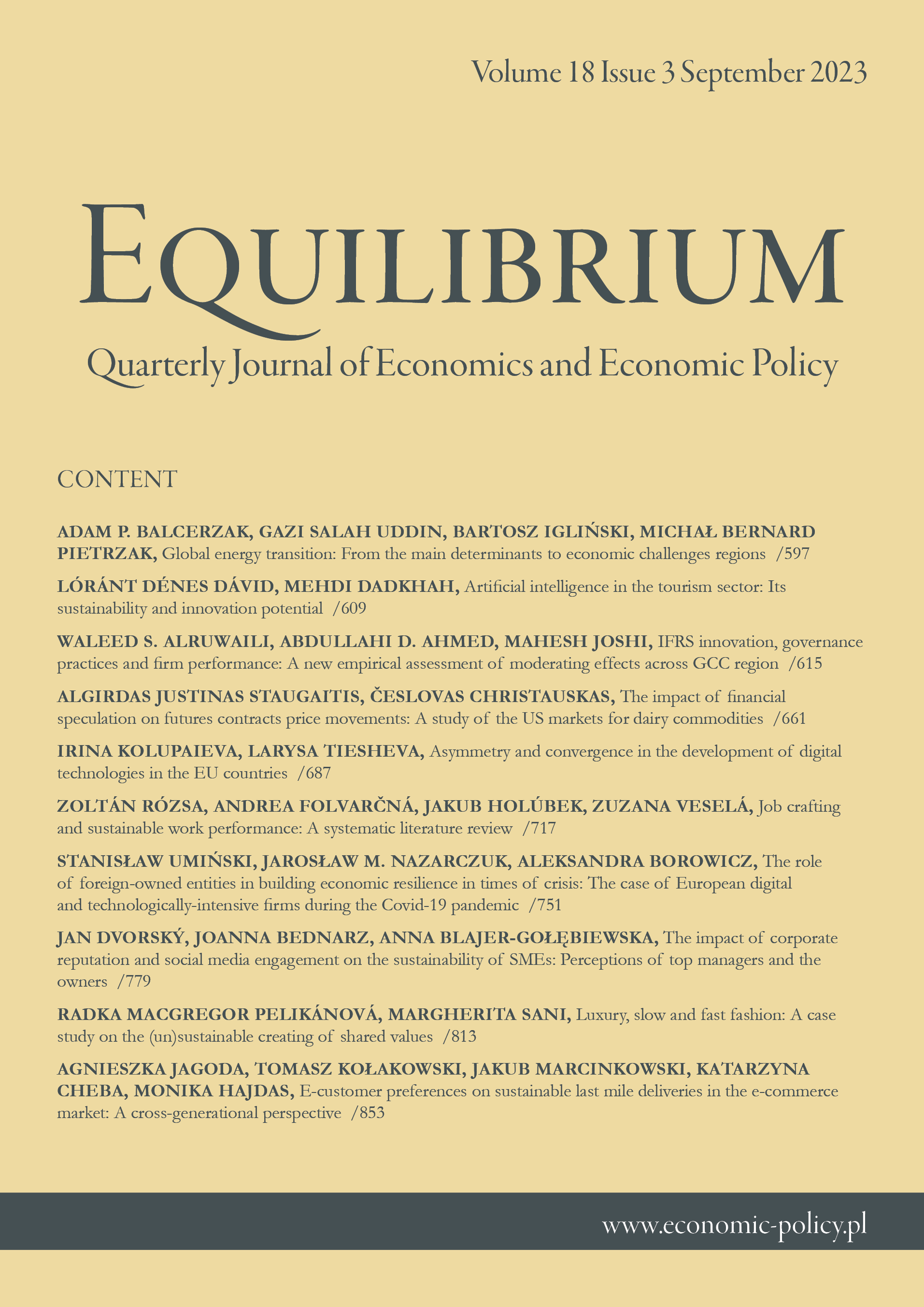Asymmetry and convergence in the development of digital technologies in the EU countries
Authors
Asymmetry and convergence in the development of digital technologies in the EU countries
Authors
Author(s): Irina Kolupaieva, Larysa TieshevaSubject(s): EU-Approach / EU-Accession / EU-Development, ICT Information and Communications Technologies, Socio-Economic Research
Published by: Instytut Badań Gospodarczych
Keywords: EU; digitalization; digital gap; digital technologies; convergence; digital strategy; competitiveness;
Summary/Abstract: Research background: Digitalization in the context of the COVID-19 pandemic has accelerated significantly across Europe, including in regions that are at the stage of catch-up development. However, as innovative technologies are intensively integrated into everyday life, the digital gap between the EU countries is increasing. The widening digital gap is becoming a serious threat to achieving the EU's sustainable development goals and building a sustainable European society.Purpose of the article: The purpose of the article was to empirically substantiate the inclusiveness and convergence of the digital strategy in the EU countries.Methods: Using the method of fuzzy sets, the level of asymmetry in access to transactional (e-commerce), information (cloud computing), operational (artificial intelligence) technologies in the EU countries was assessed. The negative impact of the digital gap within the countries (the gap between small, medium, large companies) and the global digital gap (the gap between EU countries) on the competitiveness of countries was established, for which correlation analysis and the Granger causality test were used.Findings & value added: The findings of this study contribute to the literature of digital transformation and digital gap of European countries. The impact of the digital gap in transactional, information, operational technologies on the competitiveness of countries is differentiated depending on the level of digitalization of the country. Cluster groups of countries are determined by the convergence of digitalization and ways to ensure long-term competitiveness. The directions for reducing the digital gap in the EU countries are substantiated by changing the priorities of spending on innovation and increasing productivity, diversifying the digital technologies used. The empirical results obtained can serve as a basis for improving the effectiveness of the digitalization policy in the EU countries in accordance with individual convergence goals. The main added value of the paper is related to the presented research procedure, which can be used in analyses of digital technologies development also for other countries. The results provide valuable insights into evaluating the digital technologies in European countries.
Journal: Equilibrium. Quarterly Journal of Economics and Economic Policy
- Issue Year: 18/2023
- Issue No: 3
- Page Range: 687-716
- Page Count: 30
- Language: English

